300 Norma Mag – Ballistics and Caliber Comparison
In this article, we’re going to explore:
- 300 Norma Mag Background
- 300 Norma Magnum Ballistics
- Cartridge Comparisons
- 300 Norma vs. 338 Lapua
- 300 Norma Ammo
- 300 Norma Mag Brass
- 300 Norma Bullets
- 300 Norma Rifles
300 Norma Mag Background

The 300 Norma was selected by SOCOM for the new Advanced Sniper Rifle (ASR) competition because of its impressive external ballistics.
You may be asking, “Isn’t every round selected because of its ballistics?” Well, yes and no.
As you may know, there are three types of ballistics, internal, external, and terminal.
- Internal ballistics refers to what is going on inside the firearm
- External ballistics refers to what is going on between the gun and the target
- Terminal ballistics refers to what happens when the bullet interacts with the target
Often rounds are chosen (by an individual, police department, or military group) because of their size, weight, internal ballistics, and/or terminal ballistics.
Internal ballistics is important when things like minimizing recoil or maximizing barrel life are important. And terminal ballistics are an important factor when there are concerns about self-defense or hunting “stopping power.”
Cartridge Size
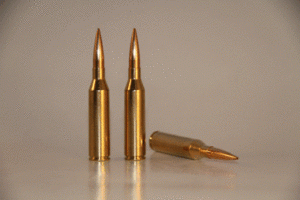
The size of a cartridge is important if the user is trying to maximize capacity or minimize the size of the firearm’s action. The weight of a cartridge is important when many rounds must be carried for long distances/periods of times.
The 300 Norma mag is based off of the 338 Norma Mag case necked down to accept a .30 caliber bullet. It is also based off of the same parent cartridge as the 338 Lapua mag….the 416 Rigby. This means that a bolt with a large face is needed which often means a large action (and a large/heavy rifle).
300 Norma Mag Ballistics
The 300 Norma Mag launches a 220gr .308 bullet at just over 3,000 fps. That’s 4,400 ft/lbs of energy!
The 300 Norma Mag really shines when it is shooting either the 230gr Berger Hybrid bullet – this bullet has an out-of-this world 0.743 Ballistic Coefficient (BC)! (If you’re looking to learn about BC, check out Chapter 10 of the Long Range Shooting Handbook) When loaded up to 3,000 fps, this bullet from the 300 Norma Mag will stay supersonic out to 1,500 meters! This is as far as a much heavier 300gr SMK shot out of a 338 Lapua can make it before it goes subsonic! Even though the 300 Norma will only have 80% of the energy of the 338 Lapua at that distance with those bullets, it can still make it there accurately, with considerably less recoil. Another benefit to the 300 Norma Mag is the overall length is shorter than the 338 Lapua Mag – it is effectively the same length as the 300 Win Mag.
It shoots flatter and has less wind drift than it’s closest counter-parts, the 338 Lapua and the 30 Nosler.
However, it is a larger diameter cartridge than the 30 Nosler (bigger bolt face/action and less magazine capacity), it falls behind on the terminal ballistic energy of the 338 Lapua (until it catches up close to 2,000 yards), and, perhaps my biggest criticism, it is not a uniform cartridge…. it is not used by other groups in our military nor any other military.
So, the 300 Norma is a wonder-round on paper. And, it is lighter recoiling than the 338 Lapua. However, I’m not convinced that it is wise to chase the latest/greatest and best performing round. After all, there’ll always be something that comes along later that will boast better external ballistics. And when that happens, the military (especially) shouldn’t race to adopt the new round at the cost of new rifles, new ammunition supply, and training.
Let’s see the 300 Norma Magnum’s ballistics out to 2,000 yards:
| Yards | Drop (MOA) | Wind (MOA) | Velocity | Time (Seconds) | Energy (ft/lbs) |
|---|---|---|---|---|---|
| 100 | 0 | 0.36 | 2859 | 0.103 | 4171 |
| 200 | -1.08 | 0.75 | 2737 | 0.210 | 3822 |
| 300 | -2.87 | 1.14 | 2618 | 0.322 | 3497 |
| 400 | -4.97 | 1.56 | 2502 | 0.439 | 3193 |
| 500 | -7.31 | 1.99 | 2389 | 0.562 | 2911 |
| 600 | -9.86 | 2.45 | 2279 | 0.690 | 2649 |
| 700 | -12.65 | 2.92 | 2171 | 0.825 | 2406 |
| 800 | -15.67 | 3.42 | 2067 | 0.967 | 2180 |
| 900 | -18.94 | 3.94 | 1966 | 1.116 | 1972 |
| 1000 | -22.47 | 4.49 | 1868 | 1.272 | 1780 |
| 1100 | -26.30 | 5.06 | 1773 | 1.437 | 1603 |
| 1200 | -30.42 | 5.67 | 1681 | 1.611 | 1442 |
| 1300 | -34.86 | 6.30 | 1594 | 1.794 | 1296 |
| 1400 | -39.65 | 6.97 | 1510 | 1.987 | 1163 |
| 1500 | -44.78 | 7.78 | 1431 | 2.191 | 1045 |
| 1600 | -50.30 | 8.39 | 1357 | 2.407 | 939 |
| 1700 | -56.21 | 9.14 | 1288 | 2.634 | 846 |
| 1800 | -62.56 | 9.93 | 1226 | 2.872 | 767 |
| 1900 | -69.38 | 10.73 | 1170 | 3.123 | 699 |
| 2000 | -76.70 | 11.55 | 1122 | 3.385 | 642 |
That may or may not look impressive to you. Let’s compare it to some other calibers for perspective.
300 Norma Cartridge Comparisons
Below, we’ve compared the 300 Norma Mag to the cartridge it is trying to replace, the 338 Lapua Mag.
However, many of you may be interested to see how the 300 Norma Magnum compares to other cartridges such as the 30 Nosler. We’ve made a full comparison for you (complete with charts!) here: 300 Norma Mag vs 338 Lapua Mag vs 30 Nosler
300 Norma VS 338 Lapua
338 Lapua Magnum is the king of long range precision cartridges. Or, at least it was… we’ll have to see if the 300 Norma Mag takes over the 338 Lapua as the premier long range cartridge.
The 338 Lapua Mag packs a wallop (at both ends) whereas the 300 Norma has less recoil, and less energy at the target until the fat 338 slows down enough at around 2,000 yards where the energy of the two bullets is close to the same.
Let’s look at some stats to compare.
As you can seen, the velocities of the two cartridges are about the same. Note, however, that the 300 Norma is shooting a lighter bullet than the 338 Lapua. You may not think that this is a fair comparison, but the 338 Lapua is meant to shoot bigger bullets.
The 300 Norma gains on the 338 Lapua at 2,000 yards because the more efficient smaller bullet maintains its speed better.
| Bullet | Bullet Weight | Velocity at 100 yds | Velocity at 1,000 yds | Velocity at 2,000 yds |
|---|---|---|---|---|
| 300 Norma Mag | 230 gr | 2859 ft/s | 1868 ft/s | 1122 ft/s |
| 338 Lapua Mag | 250 gr | 2868 ft/s | 1800 ft/s | 1060 ft/s |
300 Norma vs. 338 Lapua – Velocity
The same speed with different weight bullets is why you see the difference in energy of the two rounds. Up close, the 338 Lapua has 10% more energy than the 300 Norma. But, as the 338 Lapua slows down at extreme distances, the energy starts to even out between the two rounds.
| Bullet | Bullet Weight | Energy at 100 yds | Energy at 1,000 yds | Energy at 2,000 yds |
|---|---|---|---|---|
| 300 Norma Mag | 230 gr | 4171 ft/lbs | 1780 ft/lbs | 642 ft/lbs |
| 338 Lapua Mag | 250 gr | 4562 ft/lbs | 1800 ft/lbs | 623 ft/lbs |
300 Norma vs. 338 Lapua – Energy
The best advantage that the smaller and more efficient bullet of the 300 Norma has is how little it drops and is blown by the wind at distance. Typically heavier bullets resist the wind better than lighter bullets. However, if the lighter bullet gets to the target faster, then it doesn’t have as long to be affected.
| Bullet | Bullet Weight | Drop at 1,000 yds | Wind at 1,000 yds | Drop at 2,000 yds | Wind at 2,000 yds |
|---|---|---|---|---|---|
| 300 Norma Mag | 230 gr | -22.47 moa | 4.49 moa | -76.70 moa | 11.55 moa |
| 338 Lapua Mag | 250 gr | -23.07 moa | 4.92 moa | -81.69 moa | 12.85 moa |
300 Norma vs. 338 Lapua – Drop/10 mph Wind
300 Norma Mag Ammo
300 Norma Mag Brass
2025 Update – The .300 Norma Magnum In Military Service
Hey, Travis here with a quick add-on to Ryan’s fantastic article on the .300 Norma Magnum. I can’t speak for long ballistics like Ryan, but I’m a nerd for new firearms and cartridges adopted by the United States military. Since this article was written, the .300 Norma Magnum has seen adoption by the U.S. Military.
The .300 Norma Magnum has been adopted alongside the MK 22 Advanced Sniper Rifle. The program, headed by SOCOM, is meant to provide snipers with a rifle capable of reaching out to 1,500 yards. The MK 22 ASR is the military variant of the Barrett MRAD.
Alongside SOCOM elements of Marine Recon are also fielding the MK 22. With the elimination of snipers from standard infantry elements the MK 22 will serve a fairly limited roll outside of Recon and MARSOC.
The idea is to provide a long-range sniping option that’s lighter and smaller than a .50 BMG rifle but offers similar range for anti-personnel use. The MK 22 features the quick caliber conversion design of the MRAD, allowing SOCOM snipers to utilize a multitude of different calibers to engage the enemy.
The .300 Norma Cartridge outperforms .308 and .300 Win Mag, giving SOCOM’s snipers an edge in combat. It doesn’t beat cartridges like the .338 Lapua Magnum in effective range, but provides a lighter, more compact platform for SOCOM snipers.
Norma has become heavily involved in the military industry. The .338 Norma Magnum is also being looked at as a replacement for the M2 as a machine gun cartridge.
The .300 Norma Magnum meets the current need of military forces to reach out further and hit harder. As near-peer forces begin to adopt body armor and high-tech anti-sniper technology rounds like the .300 Norma Magnum, they offer a longer range, more lethal option.
300 Norma Mag Bullets
There’s a couple options available when selecting the right bullet for your brass. Here’s some of our favorites:
Berger Bullet- Hybrid Tactical 30 Caliber OTM : Best for Long Range Performance
Hornady- 225 Match ELD 30 Caliber : Best for Target Shooting
Scirocco II- Bonded Bullets 180 Grain 30 Caliber : Best for Hunting
300 Norma Mag Rifles
The 300 Norma is currently only available in high-end tactical style sniper rifles or custom rifles.
There are two major manufacturers that make 300 Norma Mag rifles: Barrett Firearms and Accuracy International
I used to be a huge fan of Accuracy International until I learned of their politics and started gaining experience with Barrett products other than their semi-auto 50 cal (not a fan). Now I recommend Barrett over AI.
Accuracy International makes an AX series rifle in 300 Norma Mag with a 27″ barrel:
Recent Posts
November 29, 2025
November 25, 2025
November 22, 2025
November 21, 2025

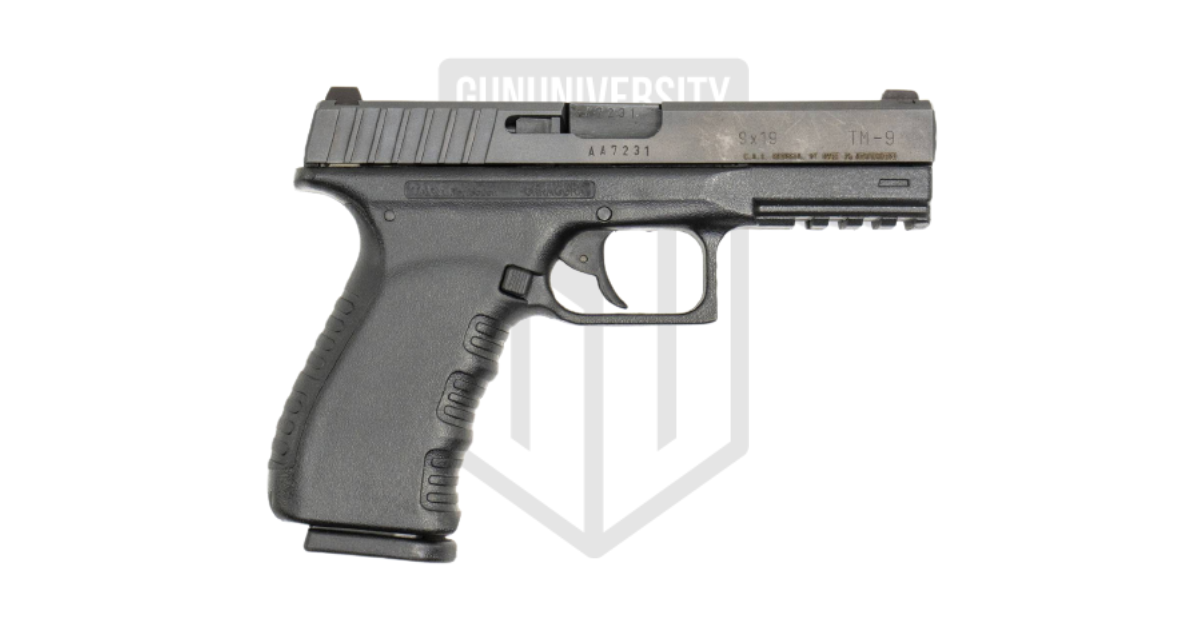
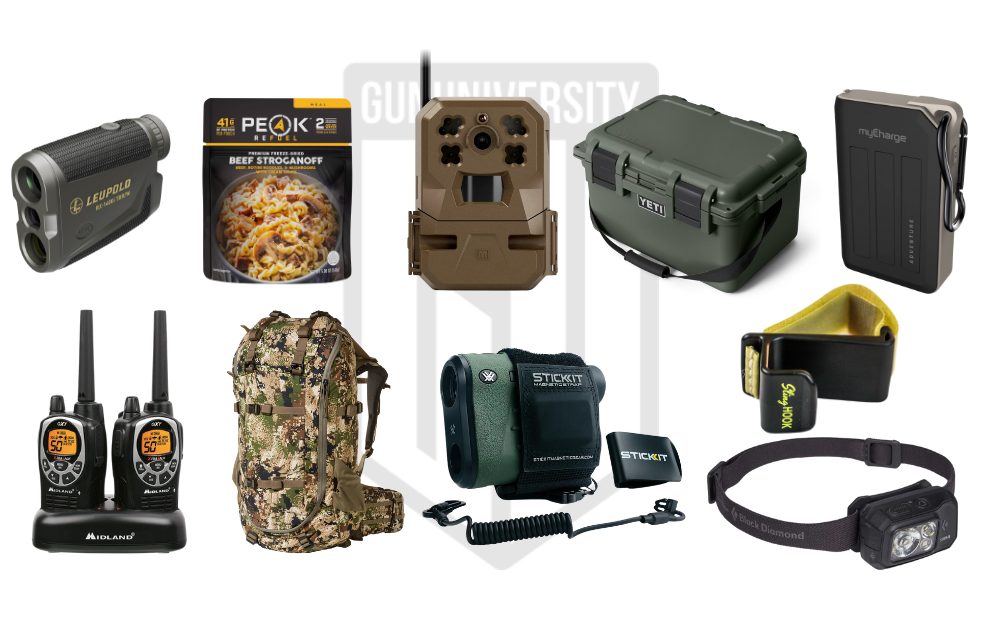
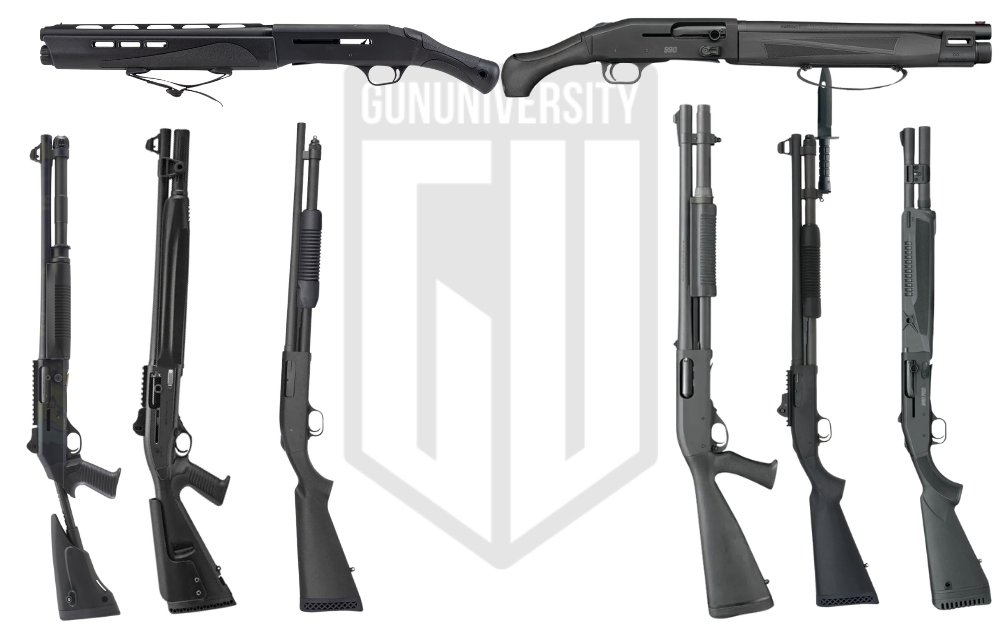
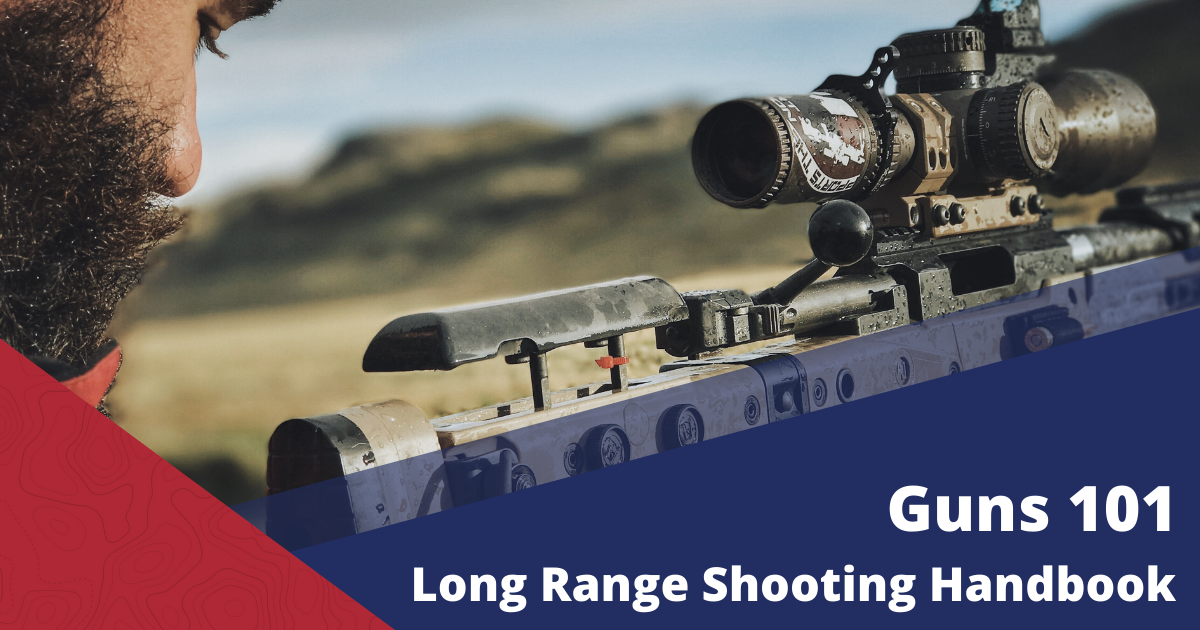
Comp re the 300 PRC against the 300 Norma?
If this is really L.P. Brezny, we’d love to have you put something like that together for us. :)
Purchased a Surgeon rifle just prior to COVID. It has two barrels; 338 Lapua Mag and 300 Norma. I haven’t fired the gun yet, as the ammo for it (should have purchased it when I got the gun) is now either non existent or exorbitantly priced. Either way, I’m really looking forward to taking it out and stretching it’s legs. Surgeon ‘guaranteed’ 1/4 MOA accuracy (which I doubt). My wife saw the rifle recently, in it’s case, both barrels, a Nightforce Beast scope, and said; that looks expensive. She has no idea!
Checkout how the 300 Norma Mag performs at a mile in real world competition environment. This is a no nonsense one mile cartridge.
https://www.rifletalks.com/ballistics-by-rifletalks/300-norma-magnum-cartridge-the-king-of-1-mile/
After reading your article on the Norma 300 mag compared to the .338 Lapua, I tend to disagree on some of the points. After researching the development of the M22 Barrett, It becomes more apparent why the Norma 300Mag was chosen by SOG.
1. The M22 was built from the ground up and not adapted from another in cooperation with all the services
2 The M22 is a 3 calibre system that is mission oriented. It has 3 barrels and bolts in the deployment case. The barrels must change over with 1MOA or less difference in POI
at 100 meters.
3. The Norma 338 Mag is replacing the 50 BMG and is designated for hard targets, the 300Norma Mag for personnel, and the .308 for practice correcting for win since the other
two are so insensitive to wind drift.
There are so many reasons for the Norma 300 Mag and the 338 Norma Mag.
I’m going to try it as soon as I can get a barreled action for it. After seeing all the features that the SOCOM team and all the other services put into the new concept and the
efforts to eliminate the problems with existing systems, and listening to shooters who have shot it, I feel confident it is a winner..
I doubt that the 50 BMG will be fully replaced by a .338 caliber machine gun. The latter makes sense as a “ light “ machine gun mounted on light vehicles replacing the 30 cal, but the 50 has so much more muzzle energy and so many different bullets available for it, that its barrier penetrating capabilities far exceed that possible with a .338 caliber gun.
Ryan, thank you for your very courteous acceptance of my post which I sincerely appreciate. I do enjoy this whole subject and enjoy speaking about it. I replied to your email and thank you once more for your offer to write which I find extremely interesting.
Sorry to invalidate your stats but it is essential to provide accuracy when discussing ballistics and to approach this science with exact numbers. Not just what seems to carry the current biased flavor.
The 300 Norma Magnum with a 220 grains bullet shot at 3000 feet per second at sea level stays supersonic to 1950 yards. NOT to 1500 yards as you claim in your article.
The 338 Lapua with a 270 Grains bullet (b.c. 0.757) at 2900 feet per second at sea level (how often do shots take place at sea level in the mountains of Afghanistan, I wonder…) remains supersonic to 1925 yards.
This isn’t to compare which is better or which is more practical to carry but simply to provide ACCURATE information.
When comparing the efficacy of projectiles in different calibers you do not pit sizes at whim. You compare bullets that share the same form factor. “form factor” is misused constantly in various literature as meaning ergonomic…This is not what form factor is.
This means that when you compare a 230 grains bullet in .30 caliber as you do in your example, you DO NOT compare that bullet to a 250 grains bullet in .338 caliber but you compare it to a bullet that shares an identical sectional density…Ballistics 101..
The bullet that has an identical sectional density to a 230 grains caliber bullet in .338 caliber must weigh much more than 250 grains as you enter for comparison in your faulty example. A 230 grains .30 caliber bullet has a sectional density of 0.3464
For your information, the sectional density is a relationship of the square of the diameter of an object in inches to its weight in pounds (not grains). The sectional density is an inertial value which means it is the same whether you hold it in the palm of your hand or in flight as long as it is not deformed which would alter its sectional density.
The .338 equivalent to a .30 caliber 230 grains bullet is a bullet that weighs precisely 277 grains. Therefore your comparison should be of these two bullets. You are slanting things in favor of the 300 by ignoring this most fundamental rule of comparison. Apples to apples please.
FYI, the sectional density of a 250 grains bullet in .338 caliber is 0.3126, therefore its equivalent in .30 caliber, or the bullet in .30 caliber that will share the same form factor will have to weigh NO MORE than 208 grains. 207.61 grains to be exact. That 208 grains bullet will not reach long distances as well as the 230 grains bullet you chose to use in your comparison. A substantial difference in mass. Mass and weight retention go together. Mass carries further. Unless the speeds of these two cartridges are very substantially different which they are NOT. The heavier projectile will always carry more energy at the target. Energy is one factor. Mass weighs heavily in that equation. The more mass the more damage to the target.
All that being said, both cartridges are excellent and both serve their purpose very well. This is not what I am approaching here. What I am doing is bringing the importance of exactitude in numbers to the fore. Any valid comparison must have proper input, not random input which may very well unintentionally slant results as in your examples.
I did not take transonic (highly variable) speeds into account in providing distances at which both projectiles remained supersonic but used the last few feet to the edge of the subsonic speeds without crossing that threshold for both projectiles. They each are within less than 10 feet before crossing into subsonic but they are still supersonic and these distances are accurate.
You may decide not to publish my post but please understand that not all readers are uninformed. Some, like myself, have been keen on these subjects for decades.
Why wouldn’t I publish this? I, above all else, want the truth and am always willing to be corrected. As a note, are you interested in writing for us? I think we could all learn some from you and you seem to enjoy explaining these things.
Lol, I’ll stick with the 338 lapua. Sold the norma. Might want to do an equal comparison. Stating it is meant to shoot heavier bullets depends on the application.
It’s sort of like saying, “Hey guys, let’s give up the 300 win mag for the 6.5 creed for our sniper platform. Lol
Be a man and take the recoil or put on your wife’s muzzle break. If you don’t know how to handle the recoil, you probably should have the weapon your shooting.
May I quote you in the future ? I like the “be a man” part and especially the “put on your wife’s muzzle brake”.
The 230 grains in 30 caliber has a sectional density of .3464. The 250 grains bullet has a sectional density of .3126 and a lower ballistic coefficient than the 30 caliber bullet you use to illustrate your example. This is not an apples to apples comparison. Not even close since the Lapua can use a 300 grains bullet and a 250 grains bullet in .338 caliber is really equivalent to a 208 bullet in 30 caliber. See where I’m getting ?
In order to make an apples to apples comparison, the .338 caliber bullet should have the same sectional density…That bullet would have to weigh 276 grains…Anything between 275 and 280 grains is fine for comparison’s sake. These heavier bullets can be pushed at over 2800 fps and have exceptionally high ballistic coefficients. They beat the 300 Norma on all counts at all ranges except for recoil. If your interest is to portray the practical efficient side, then the comparison you use is acceptable but only in illustrating recoil, far from it in total capability. It is easy to view your article as biased in favor of the 300 Norma Mag, not to take anything away from its practicality and usefulness, the 338 Lapua is still a far superior round. More pertinent information is needed in order for your article to provide good comparative and informative values. As a writer, you are obligated to provide sound information, not incomplete biased information.
My post isn’t to take anything away from your other accomplishments which are clearly shown by your credentials nor is it to ignore the most commonly used weights in these two calibers. It does seem to me that the 300 Norma mag, being a new round is heavily marketed at the expense of its competitors true qualities which should be present in an article discussing or comparing them to others. I read far too many articles boasting of “better” ballistics between one or another, usually the 7mm VS the 30 Cal. They’re mostly all done in the same vein and the bullets they use are a far cry from an apples to apples comparison and one wonders why…
Hi Ryan,
Thanks for the read. I have your book. It’s great.
Could you elaborate on the politics of AI?
Thanks
//J
You really should compare the 250 gr Badlands SICBM in the 338LM to the Berger 230 in the 300NM. The 250 can be pushed at 3050 fps with a higher BC than the Berger, making the 300LM look like a BB gun.